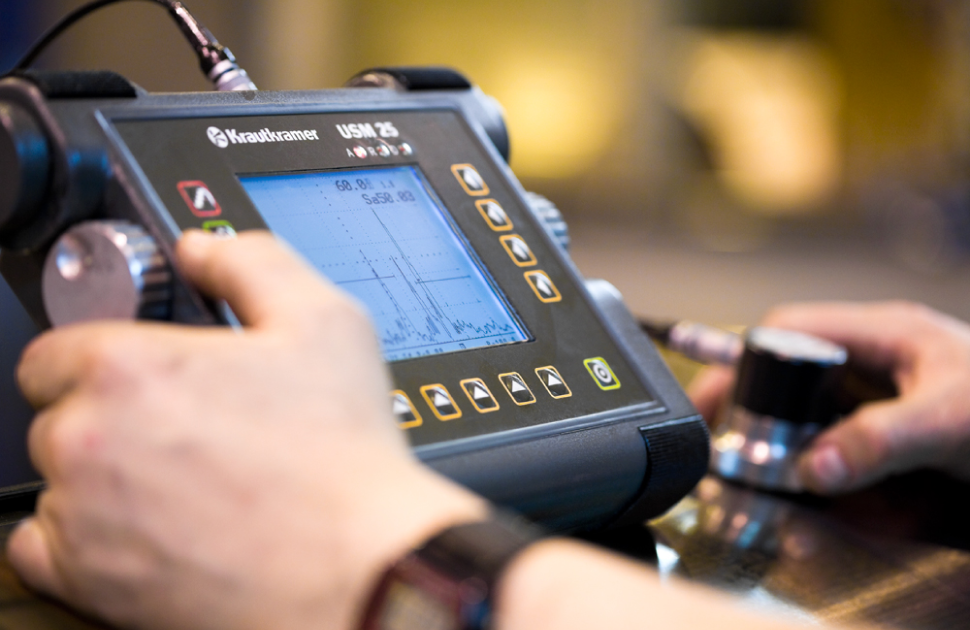Non-destructive Testing (NDT) is a crucial part of ensuring the safety and reliability of materials and components. Traditional NDT methods have been in use for many years and have proven to be effective in detecting defects and flaws in materials without causing any damage. However, with the advancements in technology, more advanced NDT techniques have been developed to provide more accurate and detailed information about the internal structure of materials.
1. Computed Tomography (CT)
Computed Tomography scanning is one of the most advanced NDT techniques available today. It is a non-destructive imaging technique that uses X-ray technology to create detailed 3D images of the internal structure of a material or component. CT scanning can detect a wide range of defects, including voids, cracks, and inclusions. It is commonly used in aerospace, automotive, and medical industries to inspect components such as engines, turbine blades, and medical implants.
2. Thermography
Thermography is another advanced NDT technique that uses infrared cameras to detect temperature variations on the surface of a material or component. This method can detect defects such as leaks, cracks, or corrosion by analyzing the temperature variations. It is commonly used in the aerospace industry to detect defects in composite materials and also in the building industry to identify energy loss.
3. Acoustic Emission Testing
Acoustic Emission (AE) Testing is a non-destructive technique that uses sensors to detect and locate specific types of defects such as cracks, corrosion, and leaks in pressurized systems. This method is used extensively in the oil and gas industry to detect pipeline leaks and in the aerospace industry to detect defects in composite materials.
4. Digital Radiography (DR)
Digital Radiography (DR) is an advanced NDT technique that uses a digital detector to capture radiographic images. This technique offers faster image acquisition, higher resolution, and the ability to manipulate images digitally. It is commonly used in the aerospace industry to detect defects in turbine blades and in the nuclear industry to inspect components such as fuel rods.
5. Eddy Current Array (ECA)
Eddy Current Array (ECA) is a more advanced form of eddy current testing that uses multiple probes to detect subsurface defects in conductive materials. This method is commonly used in the aerospace and automotive industries to inspect components such as gears, bolts, and fasteners.
6. Laser Shearography
Laser Shearography is another non-destructive testing method that uses laser technology to detect surface and subsurface defects in materials. This technique is used extensively in the aerospace industry to detect defects in composite materials.
7. Phased Array Ultrasonics (PAUT)
Phased Array Ultrasonics (PAUT) is a more advanced form of ultrasonic testing that uses multiple probes and advanced signal processing to create high-resolution images of the internal structure of a material or component. This technique is commonly used in the aerospace industry to inspect components such as turbine blades and in the automotive industry to inspect welds.
8. Neutron Radiography
Neutron Radiography is a non-destructive testing method that uses neutrons to create radiographic images of a material or component. This technique is commonly used in the nuclear industry to inspect components such as fuel rods.
These advanced NDT techniques are typically used in specialized industries such as aerospace, nuclear, and energy, and require specialized training and equipment, as well as experienced operators. However, with the increasing demand for high-quality materials and components in various industries, the use of advanced NDT techniques is likely to become more widespread.
In conclusion, advanced NDT techniques have revolutionized the way we inspect and evaluate the properties of materials and components. These techniques provide more accurate and detailed information about the internal structure of materials, which is crucial for ensuring the safety and reliability of various components in different industries. With the advancements in technology, it is likely that more advanced NDT techniques will be developed in the future, further improving the accuracy and efficiency of NDT inspections.

.png)








